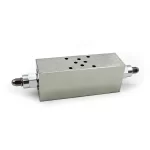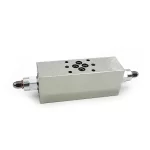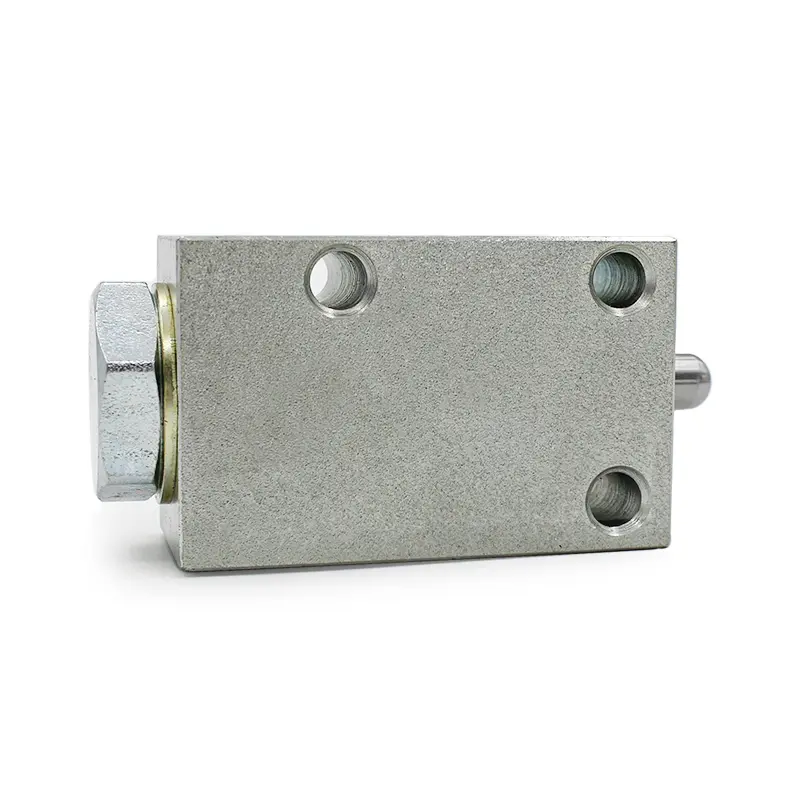
Modular One Way Flow Control Valve
The series are double overcenter valves. Through these valves it is possible to manage bidirectional loads, guaranteeing stability in the working position and controlling their movement even in the presence of gravitational loads that do not generate pressure. The valve body with double Cetop 3 flanging allows these valves to be used in hydraulic systems based on Cetop 3, installing them between the modular baseand the directional solenoid valve. The maximum working pressure is 350 bar (5075 PSI) and the maximum recommended flow rate is 40 lpm (10,6 gpm).
Movement control takes place thanks to the gradual opening of the actuator re-entry line, which is managed by the hydraulic piloting on the opposite side and which generates a back pressure sufficient to moderate the speed of movement of an actuator even in the presence of a gravitational load, thus preventing the occurrence of the phenomenon called cavitation.
The VBCS counterbalance valves can also perform the function of anti-shock valve, protecting the hydraulic system and the mechanical structure to which it is connected from any pressure peaks that may occur due to excessive loads from accidental impacts. This function is only possible if the return line downstream of the valve is connected to tank. The VBCS is a non-compensated counterbalance valve: any backpressures are added to the valve setting and counteract the opening. For this type of valve it is therefore recommended to use in systems that include a cetop directional valve with open center spool, with the users connected to discharge in neutral position.
Particular care is taken by VBCS in the construction and verification of the internal components that realize the hydraulic seal, verifying dimensions and geometric tolerances, as well as the seal itself when the valve is assembled. The body and the external components are made of high-strength steel and are protected against corrosion by zinc plating. The machining of the body on the six surfaces guarantees an optimal execution of the surface treatment to the advantage of its effectiveness.
For applications exposed to particularly aggressive corrosive agents (eg marine applications) the zinc-nickel treatment is available on request. Different setting ranges and different pilot ratios are available to better adapt to all types of applications. Using a plastic cap it is also possible to seal the setting, protecting it from tampering. For optimal operation it is advisable to set the counterbalance valve at a value 30% higher than the maximum work load.
















